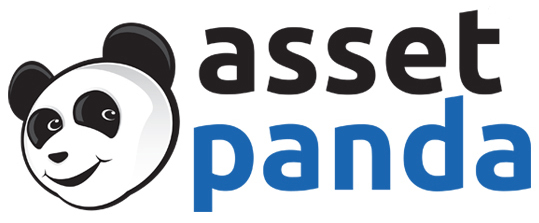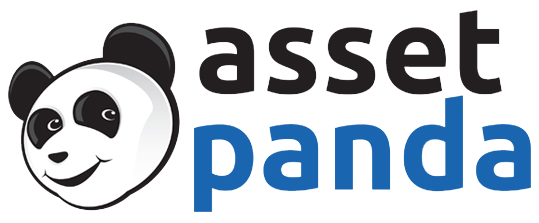The best fixed asset management software should let users compute financial and tax depreciation, track the status and condition of fixed assets, and manage all fixed asset details. On top of that, software asset tracking is a required feature for businesses with information technology (IT) assets. With that in mind, here are our top picks for the best fixed asset management software for small businesses:
- QuickBooks Online: Best overall when integrated with AssetAccountant
- Xero: Best fixed asset manager in cloud-based accounting software
- QuickBooks Accountant Desktop: Best for bookkeepers with many clients
- Asset Panda: Best for tracking tangible assets using barcodes
- AssetExplorer: Best for IT asset tracking and software license management
The Fit Small Business editorial policy is rooted in the company’s mission, which is to deliver the best answers to people’s questions. This serves as the foundation for all content, demonstrating a clear dedication to providing valuable and reliable information. Our team leverages its expertise and extensive research capabilities to identify and address the specific questions our audience has—and this ensures that our content is rooted in knowledge and accuracy.
In addition, we employ a comprehensive editorial process that involves expert writers. This process ensures that articles are well-researched and organized, offering in-depth insights and recommendations. Fit Small Business maintains stringent parameters for determining the “best” answers, including accuracy, clarity, authority, objectivity, and accessibility, and these see to it that our content is trustworthy, easy to understand, and unbiased.
Best Fixed Asset Accounting Software for Small Business Compared
QuickBooks Online: Best Overall Fixed Asset Management Software When Integrated With AssetAccountant

Pros
Cons
- Must subscribe to both QuickBooks Online and AssetAccountant
- Requires higher AssetAccountant plan to account for disposals
- Has limited implementation partners to help you set up AssetAccountant in your business
We recommend subscribing to QuickBooks Online and adding the AssetAccountant integration through your QBO dashboard. You’ll need to pay for a separate subscription for each product.
QuickBooks Online offers four plans. In addition to the number of users, each plan varies in the features that are offered.
- Simple Start: $30 per month for one user
- Essentials: $60 per month for three users
- Plus: $90 per month for five users
- Advanced: $200 per month for 25 users
All plans of AssetAccountant are good for unlimited users:
- Free: $0 for up to 10 assets (doesn’t integrate with QuickBooks Online)
- Lite: $6 per month per 100 assets
- Basic: $12 per month per 100 assets
- Standard: $18 per month per 100 assets
- Standard + Leases: $45 per month per 100 assets
Annual pricing and volume discounts are available upon request. While we recommend integrating AssetAccountant with QuickBooks Online, it is also available as a standalone product. visit AssetAccountant to learn more.
AssetAccountant with QuickBooks Online offers a complete solution for general accounting needs and fixed asset tracking, making it our overall best fixed asset management software. AssetAccountant fills the gap in QuickBooks Online’s lack of fixed asset management features and covers all the aspects of fixed asset accounting—from purchase and subsequent depreciation to maintenance and, ultimately, the fixed asset’s disposal.
Its lease accounting features help you track fixed assets under a finance lease, operating lease, or lease with repurchase agreements. AssetAccountant can also follow US GAAP or IFRS for fixed asset accounting, especially in unique issues like revaluations and impairments.
Aside from QuickBooks Online, AssetAccountant can integrate with Xero. So if you prefer Xero over QuickBooks Online, you can still access AssetAccountant’s outstanding features through integration.
Xero: Best Fixed Asset Management Software Within Cloud-based Accounting Platform

Pros
- Has full accounting software
- Computes partial-year depreciation
- Provides access to Xero advisors for expert assistance in fixed asset accounting
- Has project and inventory accounting
Cons
- Lacks built-in lease accounting features
- Has no MACRS method
- Lacks built-in features to account for impairment
All plans come with unlimited users and a fixed asset manager.
- Early: $15 per month
- Growing: $42 per month
- Established: $78 per month
Xero is a small business accounting software with a dedicated fixed asset manager. We picked it for users wanting a two-in-one solution for accounting and fixed asset management. Its fixed asset manager is decent and can help you track fixed asset purchases, depreciation, and disposal.
However, you should consider integration with AssetAccountant if you need advanced features like lease, impairment, and revaluation accounting. Another viable alternative would be Asset Panda, especially if you have assets in multiple locations. Its barcode scanning feature makes it easy for you to capture fixed assets on the floor.
QuickBooks Accountant Desktop: Best for Bookkeepers With Many Clients

Pros
- Has special and unique features for bookkeepers and accountants offering accounting services to Pro and Premier users
- Can access all the industry editions of QuickBooks Premier
- Is compatible with previous editions of QuickBooks Pro and Premier
- Performs fixed asset accounting for an unlimited number of companies
Cons
- Is only for QuickBooks Desktop ProAdvisors
- Is not a product sold to end-users, such as businesses
- Requires Accountant Copy to transfer files from client to bookkeeper
QuickBooks Accountant Desktop comes in two membership levels:
- ProAdvisor Premier Software Bundle: $799 per year, per ProAdvisor
- ProAdvisor Enterprise Software Bundle: $1,299 per year, per ProAdvisor
Each includes the platform and a ProAdvisor membership.
QuickBooks Accountant Desktop is a special product intended for bookkeepers and CPAs and is the only QuickBooks Desktop version with a fixed asset manager. It has features that let practitioners review and adjust clients’ books and fix client errors in bookkeeping. If you’re not a bookkeeper, we recommend Xero since it is also an accounting software but is not a product that caters solely to bookkeepers.
Asset Panda: Best for Tracking Tangible Assets Using Barcodes

Pros
- Has barcode generation to identify assets easily
- Has full lifecycle history for all fixed assets
- Tracks software licenses as assets
- Is available on iOS and Android
Cons
- Only uses straight-line depreciation
- Has no transparent pricing
- Has lease accounting and depreciation tracking only as add-ons
Asset Panda is custom-priced depending on the needs of the users. The quoted price will include the following:
- IT and general asset management module
- Unlimited users
- 24/7 support via email
- Customizable fields and workflows
- Cloud-based access
- Mobile app access for iOS and Android
- Single sign-on (SSO) and authentication
Asset Panda is a good pick for businesses needing to track both tangible and intangible assets. Whether it’s software, furniture, laptops, or office refrigerators, it is a one-stop solution for tracking fixed assets. Its barcode scanning feature lets you create unique barcodes for each fixed asset. You can print and paste the barcode on the body of the fixed asset and use it as a label.
The only downside is that Asset Panda doesn’t integrate with accounting software, meaning you’ll need to make journal entries to record depreciation and disposals. If you don’t want to create fixed asset journal entries in your accounting platform, we recommend AssetAccountant because it integrates with QuickBooks Online and Xero.
AssetExplorer: Best for IT Asset Tracking & Software License Management

Pros
- Has free plan with no expiration
- Scans business’s network to detect devices and software used
- Connects IT assets relationships with the IT infrastructure
- Tracks software installed on all devices
- Computes depreciation in four methods: declining balance, double declining balance, straight line, and sum-of-the-years digits
Cons
- Lacks a web version
- Tracks only IT-related hardware and assets
- Is unideal for businesses without IT infrastructure
- Is unideal for businesses without IT department
- Lacks MACRS depreciation
AssetExplorer’s plans are license-based and include free annual maintenance service. You can use each license until the limit. You can try AssetExplorer for 30 days to track 250 IT assets. Otherwise, you can proceed to the Free plan that lets you track 25 IT assets.
Here are its paid tiers:
- 250 IT assets: $955 per year
- 500 IT assets: $1,795 per year
- 1,000 IT assets: $2,995 per year
- 1,500 IT assets: $4,195 per year
- 2,000 IT assets: $4,795 per year
- 3,000 IT assets: $7,195 per year
- 5,000 IT assets: $9,595 per year
- 10,000 IT assets: $11,995 per year
- Additional 1,000 IT assets for 10,000 IT assets pack: $1,195 per year
We picked AssetExplorer for small businesses that mainly use IT assets or businesses with sophisticated IT infrastructure. Because the platform specializes in IT asset tracking, it is the best tool for managing everything IT. You can track computers, laptops, routers, internet and intranet connections, and databases.
However, businesses with simple IT assets may find AssetExplorer too complex for their needs. We recommend Asset Panda, as it can also track IT assets and offers a more user-friendly interface for small businesses. It’s easier to use than Asset Explorer, especially if your business has simple fixed asset management needs.
How We Evaluated the Best Fixed Asset Software for Small Businesses
We considered all fixed asset management features that will help small businesses effectively manage fixed assets with ease. Hence, the best fixed asset management software should possess the majority, if not all, of the following features:
- Multiple depreciation methods: The tool should provide users with a variety of options to depreciate their assets. Most importantly, it must also compute tax depreciation methods, like the MACRS, aside from common depreciation methods.
- Tangible and intangible fixed asset tracking: Ideally, the platform should accommodate all kinds of assets, whether tangible or intangible. For small businesses with software licenses, copyrights, or patents, you should consider a solution that can track intangibles.
- Financial and tax depreciation reconciliation: Reconciling financial and tax depreciation is important to report the correct amount of taxable income. In other words, you don’t need to adjust financial income to taxable income manually.
- Repairs and maintenance management: The software must account for repairs and maintenance activities and costs incurred so that you’ll know how many resources were used for a particular asset.
- Fixed asset disposal: The tool should simplify the fixed asset disposal process by automatically computing partial year depreciation and any resulting gain or loss from the sale.
- Fixed asset condition monitoring: The software records should have a way of tracking the fixed asset’s physical condition. Assignment of asset tags or barcodes can help with this feature.
- Lease accounting: Some small businesses may find leasing a cheaper option than buying a brand-new fixed asset. Hence, the fixed asset software should enable users to track lease payments, lease liabilities, and other lease items.
- Accounting software integration: A seamless integration with accounting tools makes it easy for your accountant to account for depreciation, repairs and maintenance, and disposal. It will be a big plus if your platform of choice is already an accounting platform.
There are different factors to consider when choosing a solution for fixed asset management. In most cases, you need to consider the following:
- Number of fixed assets in the business: If there are a lot of fixed assets used per count, a fixed asset software can be a tool that’ll help you record and monitor these assets. You can also control who can access or use fixed assets, especially if it’s difficult to track each manually.
- Value of fixed assets: Some fixed assets are expensive or critical to business operations. Tracking them through a specialized platform is one way of ensuring that they’re accounted for properly and that you’re enjoying tax savings from depreciation.
- Affordability: Some fixed asset management software is affordable, while others are expensive. You should take a closer look at your business to determine what kind of tool you can afford. Moreover, would you need a sophisticated asset tracker? Alternatively, would a simpler and more affordable option suffice?
- Location of users: In case you have a scattered workforce, a fixed asset management tracker is a big help in ensuring that all company-issued assets are assigned to employees for accountability. It’s harder to track fixed assets that are not physically present on the business premises. Hence, the use of fixed asset management software is useful for remote workers.
- Number of users: You also need to consider how many users have company-issued assets. If there are only a few, like fewer than 20, it would be more efficient to track them manually using a spreadsheet. But if tracking by spreadsheet takes time, considering a fixed asset management software may help you recover lost time.
Frequently Asked Questions (FAQs)
No, it can’t track fixed assets and record depreciation. We recommend integrating it with fixed asset management software like AssetAccountant to fill in this missing feature.
Tax savings on depreciation are the main reason why most businesses would track fixed assets. Depreciation expense reduces taxable income and income tax. If you account for all fixed assets, you can minimize tax payments effectively.
Fixed assets are long-term assets that a business owns or leases. These assets can be movable, such as vehicles, laptops, and furniture, or immovable, such as land, buildings, and office space.
Bottom Line
The best fixed asset accounting software should help your business track all fixed assets, record depreciation for tax and financial purposes, and aid in the disposal. Our best pick is AssetAccountant added as an integration to QuickBooks Online because it provides comprehensive depreciation accounting features that enable users to track both financial and tax depreciation. It can also be used for US GAAP and IFRS accounting.





